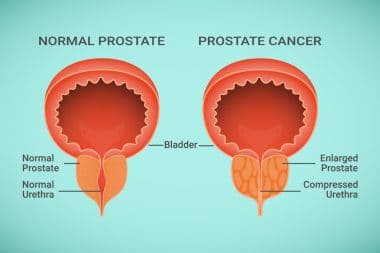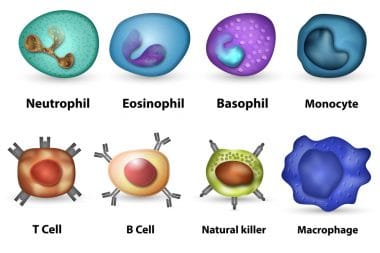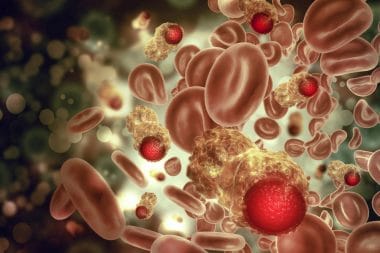Again, it can’t be stressed enough, early detection is imperative in combating prostate cancer. The challenge is that in the early stages there are no symptoms of prostate cancer. By the time symptoms appear in the form of urinary complications, the cancer has spread beyond the prostate.
Treatment options vary depending upon several factors such as age, overall health of the patient and whether there is evidence of bladder infection or kidney damage resulting from an enlarged prostate
Faced with the enormity if your disease, when you add treatment options into the mix it can be overwhelming to say the least. This is why we recommend that second opinion. We will take a look at some of those options here. Just remember, that the best option for you will be the one that you and your doctor determine is the best route for your situation. When it comes to treating prostate cancer there’s no such thing as “one size fits all.”
There are some questions that you will need to address before selecting any of the options your physician may recommend. Let’s take a look at some of those now. These shouldn’t be taken lightly, as you will be making decisions that will absolutely affect the rest of your life
- Other than the prostate cancer, are you in good overall health?
- Is the cancer confined to the prostate?
- How fast is it growing?
- How old are you?
- Is it important for you to be able to maintain control of your bladder or bowel?
- Would you find it unsettling to live with cancer that is untreated and have to look at strict monitoring of the disease?
- Are you healthy enough for surgery?
Treatment Options for Localized Cancer
In this situation you are looking at Stage I or II based on the Gleason Score. In this particular scenario, you are looking at three different choices of treatment for treatment that can result in long term survival.
One is called Watchful Waiting; one is Surgery; and finally Radiation. Let’s explore each of these options further.
Watchful Waiting
Watchful Waiting is the term coined by the medical community to describe an approach for managing cancer that has not yet moved beyond the prostate gland. This approach is also known as “observation” or “surveillance.”
Because cancer in this stage advances very slowly there is the possibility that it will not cause any lifetime problems. This is especially true of older men. Men who opt for this approach do not participate in any active treatment without cause. They visit their physicians for monitoring but unless a problem arises they have no other treatment.
If there are no indications of infection, kidney or bladder damage this can be a reasonable approach. Other obvious advantages to this approach are sparing the man pain and potential side effects related to surgery or radiation.
The down side of this approach is the risk of decreasing control of the disease before it spreads. Another minus factor is postponing treatment until a man is more at risk from the side effects and the difficulty of dealing with the treatment itself. Some men also find that dealing with the stress of having cancer and doing “nothing” about it can cause panic and anxiety.
Watchful Waiting is more viable for older men who have tumors that are very small and growing very slowly as mentioned above in the low-grade Gleason Score.
Some men who opt for this approach have been known to live for years with no outward signs of disease and in several studies for as long as 10 or 15 years, there is no significant difference in life expectancy than those men who were treated with surgery or radiation.
Surgery
There is no doubt about it. Surgery is an invasive procedure. There is evidence that surgery for prostate cancer is rampant in the United States with an increase of 60% between 1984 and 1990. Contrast this with the Watchful Waiting approach used in Europe for the same stage prostate cancer. Recent studies, however, do show a decrease in the number of men having radical prostatectomy procedures.
While the medical community would like to see more incidence of the Watchful Waiting approach, patients find the approach too stressful.
Let’s discuss the actual surgical procedure. It is called a radical prostatectomy and is the complete removal of the prostate as well as tissue nearby. The procedure can be further described by the incision used to accomplish the procedure. These incisions are:
Retropubic prostatectomy. The prostate is reached via an incision in the lower abdomen;
Perineal prostatectomy. The prostate is reached via an incision in the perineum which is the space between the scrotum and the anus.
Radical prostatectomy
consists of removing the entire prostate gland, the seminal vesicles, both of the ampullae (the enlarged lower sections of the two vas deferens which are the tubes that carry sperm from the testicles to the actual prostate gland) and the other surrounding tissue. The portion of the urethra that travels through the prostate is cut away as well as the bladder neck and some of the sphincter muscle that controls urine flow.
Dissection of the pelvic lymph node is routine with a retropubic prostatectomy but with a perineal prostatectomy the dissection requires a separate incision.
A radical prostatectomy is a serious, complicated, demanding procedure. The surgery itself will take anywhere from 2 to 4 hours. The patient will remain in the hospital for approximately 3 days. He will require a catheter (tube to drain urine) for about 10 days to 2 weeks. There is a small percentage (5 to 10%) of surgical related problems like bleeding or infection. The risk of death from the surgery is very minimal and much less for younger men as opposed to older men who may be frail.
Post surgical, long term problems associated with prostatectomy range from sexual impotence, stool incontinence and urinary incontinence. It is highly unlikely that a man will father children after the procedure. The reason is that without the prostate, very little ejaculate is produced.
It is common for the majority of men to experience incontinence after surgery and have occasional dribbling when coughing or exerting themselves. A few will lose all urinary permanently. Some men are candidates for an artificial urinary sphincter which is implanted surgically or narrowing the bladder opening with injections of collagen.
Stool or fecal incontinence (loss of normal muscle control of the bowels) may affect some men after their prostatectomy. This is caused by muscle damage during rectal surgery and stool incontinence is also caused because of a reduction of the elasticity of the rectum. What this does is shorten the time period between the sensation of the stool and the need to have a bowel movement. The rectum can be scarred and stiffened by surgery or radiation.
Historically, a prostatectomy always resulted in sexual impotence. Advances in surgical procedures called “nerve-sparing surgery” may reduce the risk of impotence. The nerve sparing technique avoids cutting the two bundles of nerves and vessels that run along the surface of the prostate gland that are needed for an erection.
Unfortunately, this procedure is not viable for everyone, if the cancer is too large or if it is located too close to the nerves. Under these circumstances, even with this technique many men (especially older men) will become impotent.
The chances of impotence run the gamut from 20 to 90% depending on age, stage of the disease and the type of surgery.
Radiation Therapy
Radiation therapy consists of using very high energy x-rays. They are delivered by an external beam from a machine or actually implanted in the prostate to kill cancer cells.
External Beam Radiation Therapy
This treatment can also be used to treat men whose cancer tumors have advanced into the pelvis and can’t be removed with surgery if they have no indication of lymph node invasion. Radiation therapy can also reduce tumors and relieve pain for men who have advanced disease.
External beam radiation therapy treatments are usually conducted 5 days a week for up to 6 or 7 weeks. The treatments are painless with each session lasting just a few minutes. Sometimes, if the tumor is extremely large, hormonal therapy may begin during the radiation therapy and can continue for several years.
Hormonal therapy prevents cancer cells from receiving the hormones that feed their growth. In prostate cancer, male hormones are blocked with hormonal drugs or by surgically removing the testicles.
The prime target of the external beam radiation is the prostate gland itself as well as irradiating the seminal vesicles as they are a common area of cancer spread. It was once believed that irradiating the lymph nodes in the pelvis was necessary, but the long term benefits have proven that this only applies to certain situations.
Since a radiation beam is passed through normal tissue to reach the prostate, there is the risk of killing healthy cells. Diarrhea is a side effect when radiation is applied to the rectum but diarrhea, in addition to fatigue caused by the radiation, will usually disappears when treatment is completed.
One of the long term effects of radiation is proctitus. This presents as inflammation of the rectum, bleeding, bowel problems such as diarrhea and cystitis which is an inflammation of the bladder. This usually leads to problems with urination. Radiation therapy also results in impotency for 40 to 50% of men treated.
Some of these side effects may be minimized by using higher energy radiation beams that can be more precise in targeting the affected area. Coupled with computer technology, treatments are tailored to exactly match the anatomy of the man being treated. This type of state of the art equipment is not always readily available.
Internal Radiation Therapy
Internal Radiation Therapy is a procedure that delivers a very high dose of radiation to tissue in the immediately affected area and minimizes the damage to healthy tissue like the rectum and the bladder.
This is accomplished by inserting dozens of tiny seeds that are radioactive directly into the prostate gland. The therapy depends on ultrasound or CT that guides placement of very thin needles through the skin of the perineum. The needles deliver the tiny seeds (made up of radioactive palladium or iodine) directly into the prostate using a pre-determined, customized pattern created by extremely sophisticated computer programming. This high tech process allows the needles and seeds to directly conform to the size and shape of each prostate.
This procedure is normally completed in just an hour or two. It is done under a local anesthesia and the patient goes home the same day.
Radiation is emitted from the seeds for up to several weeks. Once insertion is complete, the seeds remain in place causing no harm whatsoever.
Some physicians use a different approach. They will use a more powerful radioactive seed and implement over several days. These are temporary implants. This procedure requires hospitalization and may be combined with low doses of external beam radiation.
Long term results are not yet in on this procedure primarily due to the fact that internal radiation therapy is still a recent process and is limited to just a few patients. However, after 5 years more than 90% of patients treated still remain cancer free.
The procedure is not recommended for large, advanced tumors or for men who were previously treated with transurethral resection of the prostate (TURP) or Benign Prostatic Hyperplasia (BPH). These men are at a higher risk for urinary problems. When a man has small, well-differentiated tumors it is an option that has fewer side effects as well as being less invasive. It is less costly than external radiation or surgery and requires a shorter hospital stay.
Discomfort experienced post-implant is usually controlled by oral painkillers and a man can expect a few weeks of incontinence. Long term problems like prostatitis (inflammation of the prostate gland) are infrequent and usually not severe in nature. Only 15% of men under the age of 70 experience sexual impotence and 30 to 35% of men over the age of 70.
Treatment options for cancer spread beyond the prostate.
In this situation the localized therapies just won’t be enough to stop the growth. This is Stage III and radiation therapy will most likely help by keeping the tumor in check. Radiation combined with hormonal therapy will help to slow the growth.
Hormonal therapy
With hormonal therapy, the goal is to cut off all production of male hormones, such as testosterone, resulting in castration. Castration can be surgical or medical but the end result is the same and for good reason.
Prostate cancer cells can actually “feed” on male hormones causing them to grow. Blocking the hormones with an antiandrogen (drugs that block male hormones from circulating in the blood) will slow the growth of the cancer cells. This process is the equivalent of a medical castration.
There are numerous approaches to the use of hormonal therapy. Different drugs have been combined to test the results. An example of one such combination is known as maximum androgen blockade. This is a total hormonal therapy usually combined with either surgical or medical castration. An antiandrogen pill is ingested each day for months or years.
Evidence as to the efficacy of this approach has proven that there is no significant difference in the effectiveness of this process as opposed to standard hormonal therapy. However, surgical and hormonal therapies in combination do seem to relieve symptoms.
When considering surgical castration versus medical castration, it’s important to keep one fact in mind. Medical castration can be reversed simply by ending use of the drug. Oddly enough, in some cases ceasing the hormonal treatment has temporarily interrupted the growth of the cancer.
While hormonal therapy in the case of metastatic cancer seems to work, sadly, the reprise is only temporary. Remission will normally last for 2 or three years. At some point, those cancer cells that do not need testosterone to grow will begin the growth cycle again. If this takes place a second array of hormonal drugs (progesterone or hydrocortisone to name two) may be considered.
Clinical Trials
Investigating the possibility of participating in clinical trials is always an option for treatment. Clinical trials are usually new drugs, combination of drugs or mechanical in nature.
Cryosurgery
This process is used to kill prostate cancer cells by freezing them. Similar to the tiny radioactive seeds delivered through thin needles that we discussed previously, rather than seeds liquid nitrogen is passed through thin probes that are passed through needles that have been passed through the perineum directly into the prostate. The liquid nitrogen will form a ball of ice from the cancer cells and as the frozen cells thaw out they break up. This procedure will take a couple of hours under anesthesia which can be either local or a spinal and a 1 or 2 day hospital stay.
There is a downside to this treatment. Even though a “warming catheter” is inserted into the penis to protect the urethra, the overlying nerve bundles usually freeze as well rendering the man impotent.
Chemotherapy
While chemotherapy is an aggressive approach, according to the medical community it is not necessarily effective as a choice to fight the slow growing prostate cancer cells.
This does not mean that it should be ruled out entirely. New anti-cancer drugs are always being studied and released. There are a few currently under study that are being included surgical or radiation therapy in men at Stage III prostate cancer.
Another study includes them in the regimen along with hormonal therapy. This is specifically being used for men with advanced cancer that is not responsive to hormonal therapy by itself.
Early Hormonal Therapy
Just as the name signifies, this is the practice of starting hormonal therapy immediately upon the diagnosis of prostate cancer. The goal is to slow the growth of cancer cells that have grown beyond the prostate and into surrounding tissue and even the lymph nodes. Sometimes early hormonal therapy helps in shrinking the tumor.
Conformal Radiation Therapy
Conformal radiation therapy (3D-CRT) is a three dimensional computer software program. It allows radiation beams to conform and shape to fit the prostate thereby accurately targeting only the prostate gland thereby minimizing damage to the surrounding healthy tissue.
No matter what avenue of treatment you select for managing prostate cancer, do your very best to maintain a positive attitude. Yes, the horizon may look a bit gloomy, but with modern medicine advancements are being made every day.
Your best defense is a strong offense. Get screened as soon as possible for early detection then have regular follow-ups especially if you are in an at risk group.








Reply